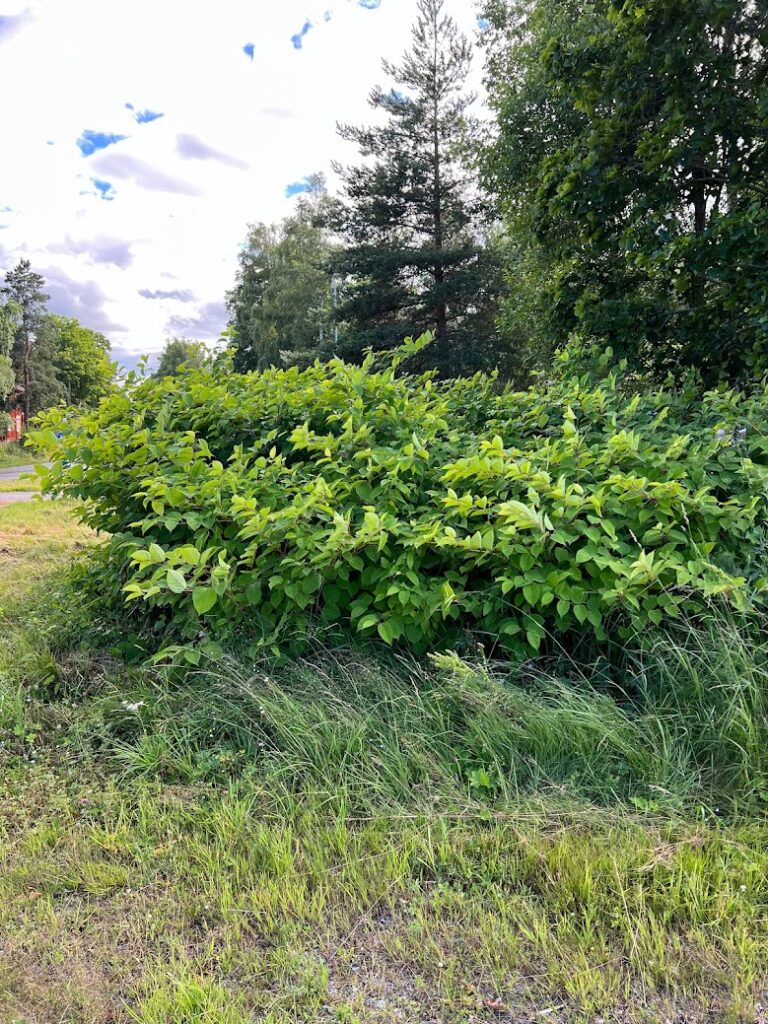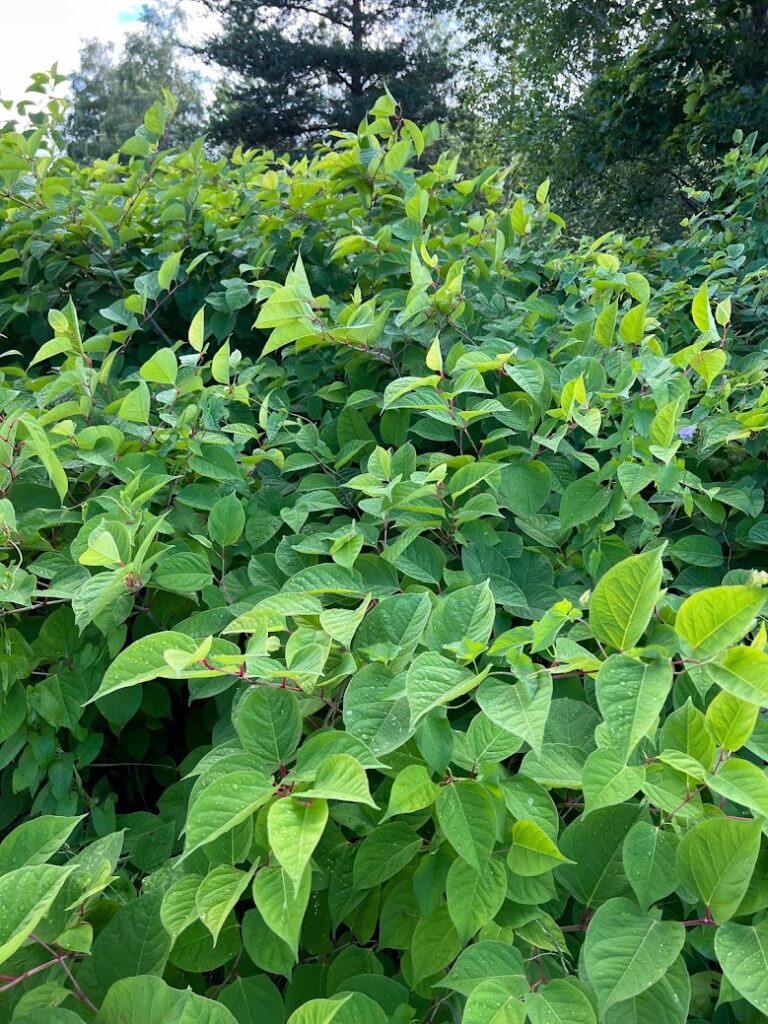Japanese Knotweed is a beautiful plant that can be found all over Europe and also in the USA, in addition to Asia where it originally comes from. With its large, heart-shaped leaves and tall, stem-like stalks, Japanese Knotweed can be an impressive addition to any landscape. Unfortunately, its charming appearance conceals a darker reality, as Japanese Knotweed is known to be an alien invasive species that can have serious consequences for the ecosystem, and maybe the worst invasive plant in the world.

This plant, originally from East Asia, was introduced to other parts of the world as a garden plant due to its decorative appearance and rapid growth. Unfortunately, Japanese Knotweed has proven to be extremely aggressive and can spread rapidly. Its ability to establish dense stands often displaces native plants and significantly alters the natural landscape.
The plant’s invasive nature is a serious concern for conservationists and gardeners alike. Uncontrolled spread can disrupt local ecosystems, reduce biodiversity, and degrade habitats for other plants and animals. Additionally, its deep roots and dense stands can be extremely difficult to remove, making it a persistent challenge for those trying to control its spread.

Despite these problems, there is still hope. By increasing awareness of Japanese Knotweed’s invasive nature and taking measures to control its spread, we can help minimize its negative effects on the environment. This may involve regular monitoring and removal of existing stands, restricting sales and distribution as a garden plant, and promoting the use of native plants in landscaping.
You can find more information about Japanese Knotweed here: